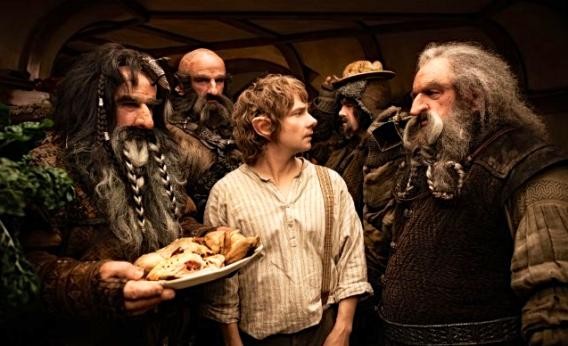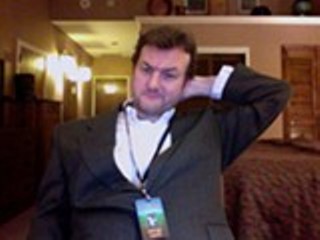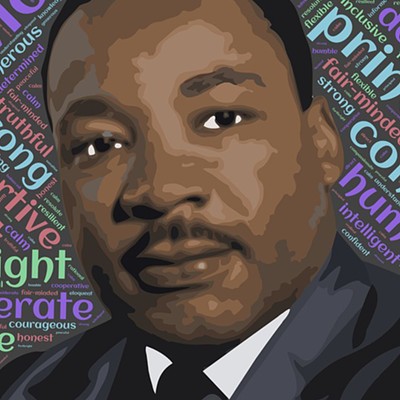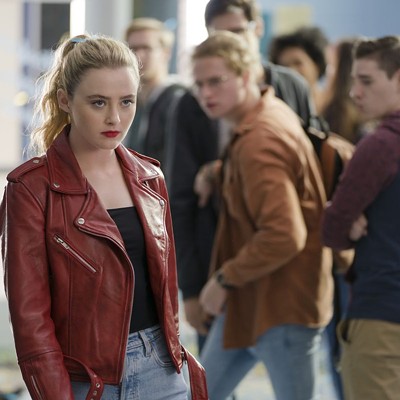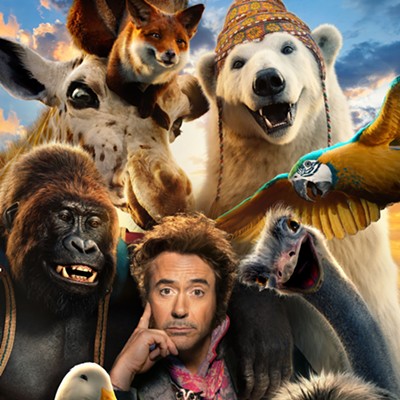THE HOBBIT: AN UNEXPECTED JOURNEY
***
When 20th Century Fox debuted the revolutionary widescreen process CinemaScope with 1953's The Robe - thereby allowing the medium to successfully distinguish itself from new-kid-on-the-block television and its boxy images - the critic for the New York Daily News responded by giving the movie eight stars: four stars for the film itself and four stars for CinemaScope. I'll refrain from similarly adding any more celestial icons to my ratings - with all those pointy stars hanging around, I might poke my eye out - but I will concede that a new process available at select screens showing The Hobbit: An Unexpected Journey deserves a review of its own.
Moviegoers will have a buffet of viewing options to consider when purchasing tickets for The Hobbit: 2-D or not 2-D; the eye-popping spectacle of 3-D; the larger-than-life essence of IMAX. And now we can add High Frame Rate (HFR) into the mix. Instead of merely offering the flick in the normal 24 frames per second, director Peter Jackson has opted to make motion picture history by fashioning The Hobbit as the first movie completely filmed and projected at 48 frames per second. His intention is to take film to another level with this concept.
My advice, then, would be to see the movie in 2-D or even regular 3-D and leave the 48fps nonsense on the wayside. This way, one can accept the movie on its own merits, without any pesky distractions. To that end, Jackson and his collaborators have made a film that's often entertaining but can never quite shake the stigma of being a footnote to The Lord of the Rings trilogy that earned billions of dollars and won handfuls of Oscars.
Opting to divide J.R.R. Tolkien's The Hobbit - a slim work compared to the gargantuan LOTR - into three films reeks of a cash grab even more than splitting the final Harry Potter and Twilight books into cinematic two-parters, but considering the piece gathers steam after a lethargic opening, it seems likely that the subsequent entries will maintain the stride and emerge more balanced than this outing.
In this prequel to the Rings trilogy, Ian McKellen again portrays the wise wizard Gandalf, electing to help a gang of dwarves take back their home (and all the riches therein) from the fearsome dragon Smaug. Gandalf's intuition tells him that the dwarves will only succeed in their task if the hobbit Bilbo (Martin Freeman) accompanies them on their journey. A homebody averse to adventure, Bilbo reluctantly agrees to join the band of merry men, and soon they're off coping with orcs, trolls, rock creatures and CGI wolves borrowed from the Twilight hard drive.
Because he's swelling this tale out to three movies that will each doubtless clock in near the three-hour mark (this first one's 168 minutes), Jackson treads a lot of water, never more obviously than in the prolonged early stretch when the dwarves first meet Bilbo by invading his home like American Pie teenagers searching for a house party. Once the group bids adieu to safety and comfort, though, the movie picks up with an endless stream of action set-pieces. While there's theoretically a sameness about the setups (band sees impending danger, band runs, band is forced to fight, band is saved at last moment, repeat cycle), Jackson expertly stages each one in a way that cumulatively reaches its crescendo with a climactic battle against some particularly nasty orcs.
Perhaps in an effort to further bridge this film with The Lord of the Rings (or, again, maybe just to pad the running time), Jackson and his co-scripters include familiar faces that weren't even in Tolkien's The Hobbit. Frodo (Elijah Wood), the older Bilbo (Ian Holm), Galadriel (Cate Blanchett) and Saruman (Christopher Lee) all turn up, and their appearances are superfluous in the extreme. On the other hand, Gollum (Andy Serkis) does appear in Tolkien's text, and his scene here, confronting a lost Bilbo, is one of the highlights of the film.

